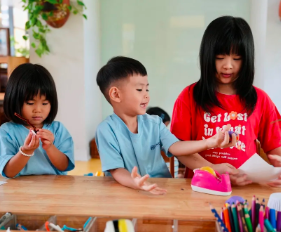A calm and nurturing classroom can make a big difference in how young children learn and grow. When children feel safe, respected, and valued, they are more likely to be engaged and confident in their learning journey. Teachers play a key role in shaping this kind of environment, and it starts with small, consistent actions that build trust and comfort.
Why a Calm Environment Matters
Children need consistency and peace to feel secure. A calm classroom helps reduce stress, supports emotional well-being, and encourages better behavior. It also gives children the space to think clearly, express themselves, and build positive relationships with others.
Simple Ways to Foster Calm
Start the day with a warm welcome and a friendly smile. A predictable routine, paired with gentle transitions, helps children know what to expect. Use soft lighting, organized shelves, and cozy corners to make the classroom feel peaceful and inviting. Soft background music or quiet time activities can also help create a soothing atmosphere.
Nurturing Relationships and Kindness
Positive connections are at the heart of a nurturing classroom. Taking time to listen to children, showing empathy, and using encouraging words can build strong bonds. Group activities and shared play allow children to practice kindness, teamwork, and friendship in a supportive setting.
Clear Rules with a Gentle Touch
Children respond well to clear expectations stated in a calm and respectful way. Focus on what children can do—such as “Let’s use gentle hands” or “Remember to take turns.” Reinforce positive behavior with encouragement rather than punishment, and offer support when children are learning to manage their emotions.
Supporting All Learners
Every child brings unique strengths and needs to the classroom. A nurturing teacher embraces differences and offers flexible options to help each child feel included. This may mean offering quiet breaks, using visual aids, or adjusting activities to match different learning styles.
Helping Children Manage Emotions
Young learners may not always know how to handle big feelings. Having a safe space where they can calm down, along with tools like breathing exercises or picture books about emotions, helps children learn self-regulation skills in a healthy, gentle way.
Conclusion
A calm and nurturing classroom is built on respect, care, and consistency. By creating an environment where children feel safe and supported, teachers help lay the foundation for lifelong learning and well-being. Even the smallest efforts—like a kind word or a comforting routine—can have a lasting impact on a child’s day.


